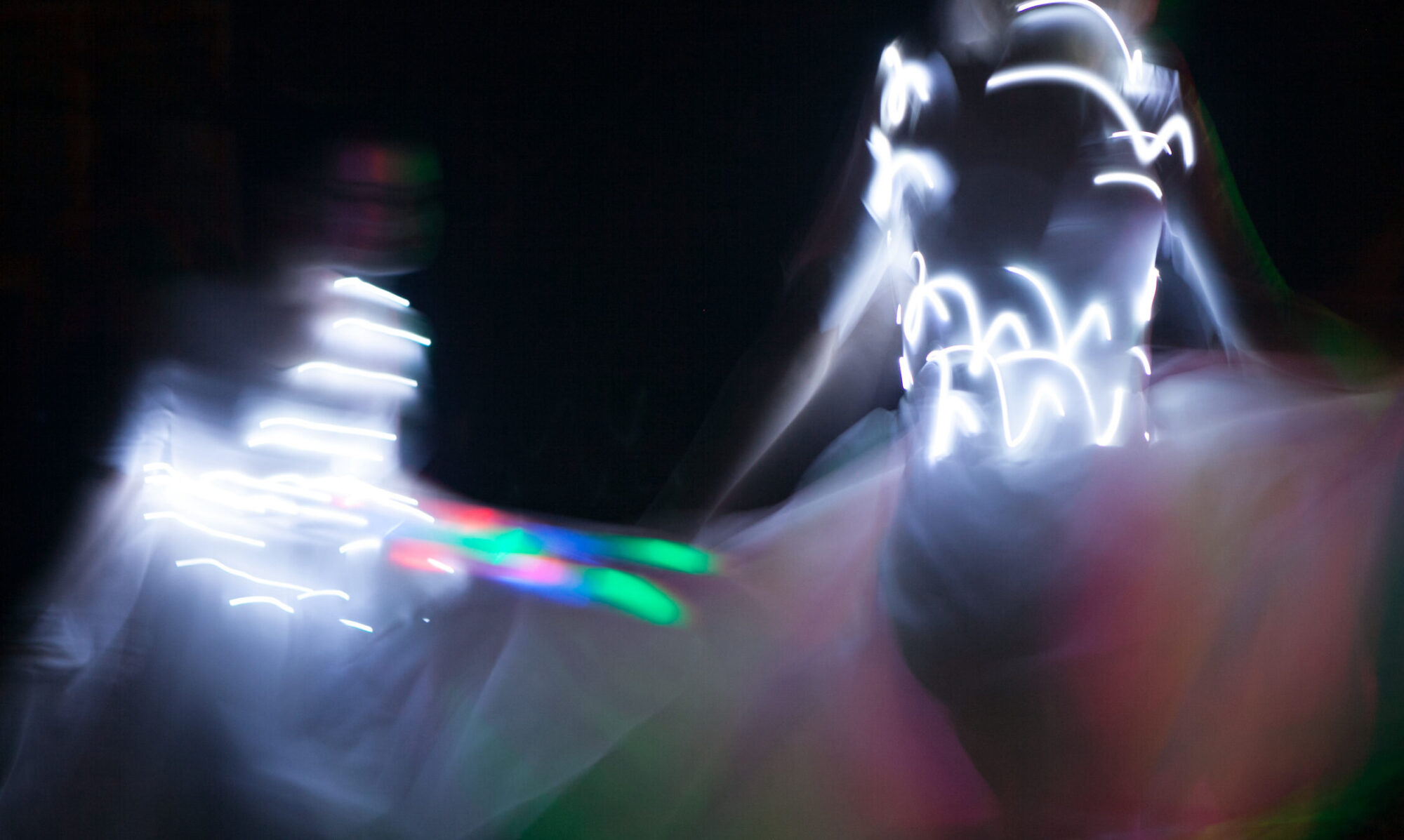Notes
1 Eg. Kraut 2016, Waelde 2018, Waelde et al 2017, Van Camp 2019, Biagioli Ravetto and Ravetto Biagioli 2022, Muñoz 2023
2 Eg. Burt 2016, Bench 2020, Ravetto-Biagioli 2021, Leach 2022
3 Eg. Franko 2004, Leach 2014, Kraut 2016, Foster 2019, Bench 2020
4 Such as the debate over Beyoncé’s referencing of Anne Teresa DeKeersmaeker’s work, multiple law suits against Epic Games for the alleged use of people’s dances for their emotes and Charli D’Amelio’s initially uncredited copying of Jalaiah Harmon’s Renegade dance.
5 Eg. Kraut 2016, DeFrantz 2019, Bench 2020, Boffone 2021, Johnson 2021, Davis 2022
6 Franko 2017: 28-29
7 Eg. Kramer 2012, Schneider 2015, Foster 2019, Naccarato 2019, Nair 2020, Brown 2020, Foellmer 2020, Hunter 2021, D’Amato 2022
8 Eg. Pouillaude 2017, McFee 2018, Pakes 2020, Davies 2024
9 For important critiques of ontology and the ‘ontological turn’ see Fanon 1967, Moten 2013, Hunt / Tłaliłila’ogwa 2014, Todd 2016, Thompson 2017
References
Bench, H. (2020) Perpetual Motion: Dance, Digital Cultures, and the Common. Minneapolis, London: University of Minnesota Press
Biagioli-Ravetto, M. and Ravetto-Biagioli, K. (2022) ‘Riffing off Intellectual Property in Contemporary Dance,’ International Journal of Cultural Property, 29(2): 1-16
Boffone, T. (2021) Renegades: Digital Dance Cultures from Dubsmash to TikTok. New York: Oxford University Press
Brown, N.G. (2020) ‘Nomadic Making: Enacting Difference Through Collaborative Performance Practice,’ Choreographic Practices, 11(1): 149-161
Burt, R. (2017) Ungoverning Dance: Contemporary European Theatre Dance and the Commons. London, New York: Oxford University Press
D’Amato, A. (2021) ‘Movement as Matter: A Practice-Based Inquiry into the Substance of Dancing, Dance Research Journal, 53(3): 69-86
Davies, D. (2024) An Ontology of Multiple Artworks. New York: Oxford University Press
Davis, C. (2022) ‘Digital Blackface and the Troubling Intimacies of TikTok Dance Challenges,’ in Boffone, T. (ed.) TikTok Cultures in the United States, Oxon and New York: Routledge, 28-38
DeFrantz, T. F. (2019) ‘What is Black Dance? What Can it Do?’ in Bleeker, M., Kelleher, J. Kear, A. and Roms H.(eds),Thinking Through Theatre and Performance. London: Bloomsbury, 87-99.
Fanon, F. (1967) Black Skin, White Masks. Translated by C. L. Markmann. New York: Grove
Foellmer, S. (2020) ‘The Archival Turn in Dance/Studies: Reflections on (Corporeal) Archives and Documents’, in David, A., Huxley, M. & Whatley, S. (eds.), Dance Fields: Staking a Claim for Dance Studies in the 21st Century. Hampshire: Dance Books, 249-272.
Foster, S.L. (2019) Valuing Dance: Commodities and Gifts in Motion. New York: Oxford University Press.
Franko, M.(2004) ‘Given Movement: Dance and the Event’ in Lepecki, A. (ed.) Of the Presence of the Body: Essays on Dance and Performance Theory, Middletown, CT: Wesleyan University Press, 113–23
Franko, M. (2017) ‘Introduction: The Power of Recall in a Post-Ephemeral Era’ in Franko, M. (ed.) The Oxford Handbook of Dance and Reenactment, New York: Oxford University Press, 1 – 16
Hunt, S. (2014) ‘Ontologies of Indigeneity: The Politics of Embodying a Concept,’ Cultural geographies, 21(1): 27-32
Hunter, V. (2021) Site, Dance and Body: Movement, Materials and Corporeal Engagement. Basingstoke: Palgrave Macmillan
Johnson, A. (2021) ‘Copyrighting Tik Tok Dances: Choreography in the Digital Age’, Washington Law Review, 96 (3): 1225 – 1274
Kraut, A. (2016) Choreographing Copyright: Race, Gender, and Intellectual Property Rights in American Dance. London, New York: Oxford University Press
Kramer, P. (2015) Dancing Materiality (Doctoral dissertation, Coventry University).
Leach, J. (2014) ‘Choreographic Objects: Contemporary Dance, Digital Creations and Prototyping Social Visiblity,’ Journal of Cultural Economy, 7(4): 458-475
Moten, F. (2013) ‘Blackness and Nothingness (Mysticism in the Flesh),’ South Atlantic Quarterly, 112(4): 737-780
McFee, G. (2018) Dance and the Philosophy of Action: A Framework for the Aesthetics of Dance, Hampshire: Dance Books
Muñoz, J.M.A. (2023) ‘Love and Theft in Dance Economies,’ Performance Philosophy, 8(2): 223-248
Naccarato, T. (2019) Re/contextualization: On the Critical Appropriation of Technologies as Artistic Practice (Doctoral dissertation, Coventry University)
Nair, S. (2020) ‘Aesthetics Of [The] Invisible: Presence in Indian Performance Theory,’ in Cull Ó Maoilearcaand Lagaay, A. (eds.) The Routledge Companion to Performance Philosophy, London and New York: Routledge, 182-192
Pakes, A. (2020) Choreography Invisible: The Disappearing Work of Dance. New York: Oxford University Press.
Pouillaude, F. (2017) Unworking Choreography: The Notion of the Work in Dance. Translated by A. Pakes. New York: Oxford University Press
Ravetto-Biagioli, K. (2021) ‘Whose Dance Is It Anyway?: Property, Copyright and the Commons’, Theory, Culture & Society, 38(1):101-126
Schneider, R. (2015) ‘New Materialisms and Performance Studies,’ TDR, 59 (4): 7-17
Todd, Z. (2016) ‘An Indigenous Feminist’s Take on the Ontological Turn: ‘Ontology’ is Just Another Word for Colonialism,’ Journal of Historical Sociology, 29 (1): 4-22
Thomas, P. (2014) ‘Single Ladies, Plural: Racism, Scandal, and ‘Authenticity’ Within the Multiplication and Circulation of Online Dance Discourses,’ in Blanco Borelli, M. (ed.) The Oxford Handbook of Dance and Popular Screen, New York: Oxford University Press, 289-303
Thompson, M. (2017) ‘Whiteness and the Ontological Turn in Sound Studies,’ Parallax, 23(3): 266-282
Van Camp, J (2019) ‘Identity in Dance: What Happened?’ Midwest Studies in Philosophy, 44: 81-91
Whatley, S., Waelde, C., Brown, A. and Harmon, S. (2015) ‘Validation and Virtuosity: Perspectives on Difference and Authorship/Control in Dance,’ Choreographic Practices, 6(1): 59-83
Waelde, C. (2018) ‘A Collecting Society for Dance: Has the Time Come? In Ellis, S., Blades, H. & Waelde, C. (eds), A World of Muscle, Bone & Organs: Research and Scholarship in Dance. C-DaRE, Coventry, 294-323
